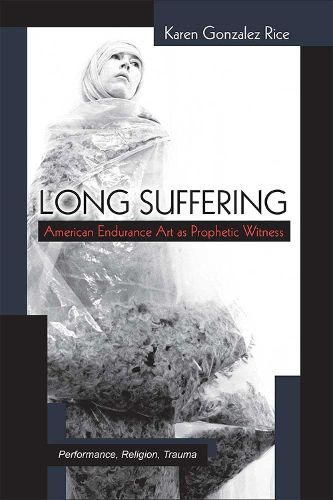Readings Newsletter
Become a Readings Member to make your shopping experience even easier.
Sign in or sign up for free!
You’re not far away from qualifying for FREE standard shipping within Australia
You’ve qualified for FREE standard shipping within Australia
The cart is loading…






Long Suffering productively links avant-garde performance practiceswith religious histories in the United States, setting contemporaryperformances of endurance art within a broader context of propheticreligious discourse in the United States. Its focus is on the work of RonAthey, Linda Montano, and John Duncan, U.S.-based artists whoseperformances involve extended periods of suffering. These unsettlingperformances can disturb, shock, or frighten audiences, leaving themunsure how to respond. The book examines how these artists workat the limits of the personal and the interpersonal, inflicting sufferingon themselves and others, transforming audiences into witnesses,straining social relations, and challenging definitions of art and of ethics.By performing the death of self at the heart of trauma, strategies ofendurance signal artists’ attempts to visualize, legitimize, and testify tothe persistent experience of being wounded. The artworks discussed findtheir foundations in artists’ early experiences of religion and connectionswith the work of reformers from Angelina Grimke to Rev. Martin LutherKing, who also used suffering as a strategy to highlight social injusticeand call for ethical, social, and political renewal.
$9.00 standard shipping within Australia
FREE standard shipping within Australia for orders over $100.00
Express & International shipping calculated at checkout
Long Suffering productively links avant-garde performance practiceswith religious histories in the United States, setting contemporaryperformances of endurance art within a broader context of propheticreligious discourse in the United States. Its focus is on the work of RonAthey, Linda Montano, and John Duncan, U.S.-based artists whoseperformances involve extended periods of suffering. These unsettlingperformances can disturb, shock, or frighten audiences, leaving themunsure how to respond. The book examines how these artists workat the limits of the personal and the interpersonal, inflicting sufferingon themselves and others, transforming audiences into witnesses,straining social relations, and challenging definitions of art and of ethics.By performing the death of self at the heart of trauma, strategies ofendurance signal artists’ attempts to visualize, legitimize, and testify tothe persistent experience of being wounded. The artworks discussed findtheir foundations in artists’ early experiences of religion and connectionswith the work of reformers from Angelina Grimke to Rev. Martin LutherKing, who also used suffering as a strategy to highlight social injusticeand call for ethical, social, and political renewal.